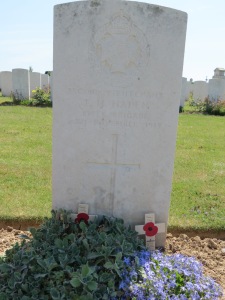Today we remember …
| 1st November 1918
Robert Browne, DSO, F Social 1895, Major, 1st Bn, Manchester Regt. Died of pneumonia contracted on active service in Mesopotamia (modern Iraq) At school he was a Prefect and played for the Cricket and Soccer teams. He became a soldier, serving in the South African War. He was married to Gladys Hopwood in 1907. He was returning to England on leave when he died of pneumonia contracted in Mesopotamia. He is buried in France. Obituary. 18.12.1918 R. G. Browne (Croome’s, 1895-1899) was in the cricket and football elevens. From the Militia he joined the Manchester Regiment, and served in the South African War (medal, with 3 clasps). Only a short time ago he was mentioned in despatches (Mesopotamia), and was awarded the D.S.O. He was returning to England on leave, when he died of pneumonia on the way.’ The date of his death was amended to 11 November 1918 in the Archivist’s copy of the Radley Register. However, the evidence for this is unknown and all other sources, including the Radleian magazine, give 1 November. Aged 37 |















